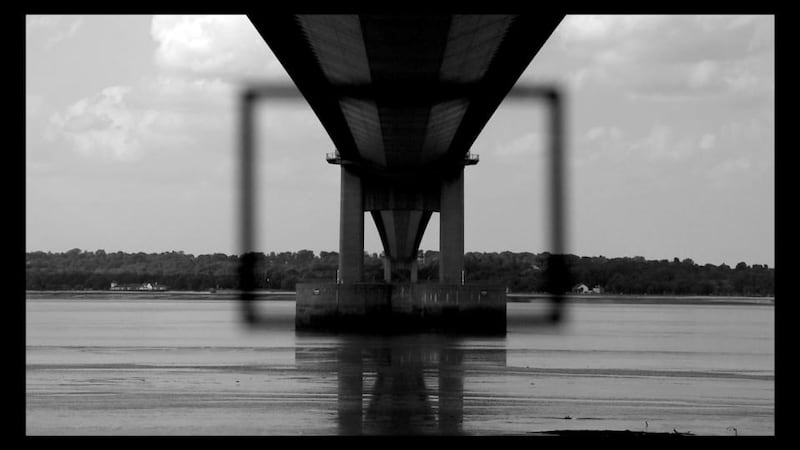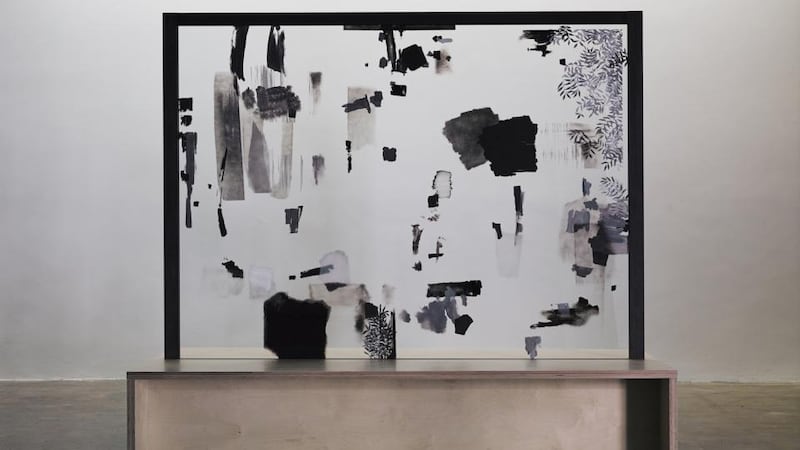In one of those projects that probably seemed like a good idea at the time, Niamh O'Malley has taken on the challenge of staging five solo exhibitions, making up a composite survey of her recent work, at widely divergent locations throughout Co Mayo.
It’s a big county, and who knew that it contains at least five really good visual-arts venues, from Westport Quay to Castlebar, Ballina on to Ballycastle, and then to Áras Inis Gluaire in Belmullet, a place that can feel like the edge of the world.
All will feature O'Malley's work throughout September. One of the shows, at the Ballinglen Arts Foundation in Ballycastle, consists of drawings. Another, at the Custom House Gallery, Westport, features two installations. The latter, and the remaining three, which involve very precisely designed video projections, are tricky enough to set up and need careful maintenance once running.


Just before embarking on the marathon installation process, O'Malley appeared a little apprehensive but was also very positive. "Patrick Murphy [RHA director and the project's curator] is going to ferry me around, and there's actually a lot of curatorial expertise in each gallery."
Murphy is based in Mayo, and O’Malley is herself a local. She was brought up on a farm near Crossmolina, though she has lived away from home since she went to study art in Belfast aged 17. She lives in Dublin.
Her work draws us into the ambiguity and strangeness of perception. One of its virtues is that, while it’s clearly heavy-duty enough to excite the kind of hyperbole that goes with critical theory, it doesn’t remotely depend on theoretical justification. You just have to trust your eyes to appreciate it. Or, come to think of it, realise that you can’t really trust your eyes.
Abstract to literal learning
When O'Malley first went to Belfast: "I was making large, abstract expressionist paintings, six-by-eight feet. There was a lot of that going on. The YBAs were just appearing. "Then I worked at Catalyst Arts [a pioneering, artist-run gallery in Belfast] for a couple of years. Eoghan McTigue and Susan Philipsz were there. That was brilliant. It was my real art education, I think."
She won a year’s fellowship to the British School in Rome. It was a tremendous experience, but she was dissatisfied with the work she did there: “It was too literal.”
The real turning point came when she won a PS1 fellowship to New York in 2003. “That was when I shifted into using video.”
Animated Central Park
In a landmark installation, The dene "vignette", she made a painting of a location in Central Park. As you look at the painted image, it flickers into life, as people walk the paths, and other slight shifts of light and air animate the scene. As Tim Maul wrote at the time of its first exhibition, part of its odd but enduring fascination was that it allowed "this fragment of cinema to operate in the space of painting".
The combination of movement and stasis, and the idea of catching us unawares, of making us question what exactly we are looking at, have remained central to everything she’s done since. She feels that an image is a provisional construction, and she encourages us to look at how images are made, and to look beyond their immediate appearances. If that sounds didactic, the work itself is not. It’s always visually rich and engrossing and mildly perplexing.
The Mayo project is not the first time she's exhibited in her native county. She had her first solo show in Foxford when she was 19. She's also made work in Mayo. Her 2006 piece Croagh Patrick, descent "Vignette'' features pilgrims flickering like ghosts against the jagged, timeless mass of the mountain. It doesn't appear in the current shows, though, which concentrate on more recent works. Of which there are, relatively speaking, many. "I'm not massively prolific," she observes. "I don't tend to make loads of work."
There are practical reasons for that. She invests a lot of time, energy and money on each piece, often drawing in technical collaborators, including a cameraperson and a cabinetmaker, although she edits her own films. “If I’m not directly working on something, I’m reading and drawing: developing ideas. I draw all the time.”
She never just sets off with a camera and sees what happens but, on the other hand, the end results are not predetermined: “It’s usually fluid, even quite abstract.”
Curators have to take it on trust that she will deliver, and they mostly do.
What we see in the gallery depends on fine-tuned optical effects, but they have nothing to do with post-production trickery. Everything happens as it is filmed, in front of the camera. The screens and filters that feature large are physically there, before the lens, usually in motion. That physicality carries over into the work’s presentation: “I’ve never shown work on a monitor, it’s always projection. There’s something about it being there in the space rather than on a screen.”
The works showing in Mayo demonstrate how her vision has broadened and developed, while remaining consistent. That consistency surprises her. “It doesn’t feel like a linear progression when I’m doing it. I always think I’m doing something radically different, but then, when I have to give a talk, say, and look back over what I’ve done, it all seems to fit together.”
Fixed and moving planes
In Quarry (2011), showing at Áras Inis Gluaire, Belmullet, and filmed in McKeown Stone's Midlands limestone quarry, a tracking, sliding camera movement fits perfectly with the quarried rock-faces which, in turn, evoke the idea of the picture plane, and the plane faces of regular solids.
But in a quarry, the “planes” are constantly being remade, a process that concludes only when the usable stone is exhausted. The allusion is painting and other image-making processes, to quarrying images and creating picture planes, all the while leaving the canvas blank, so to speak.
Flag (2008), at Ballina Arts Centre, is another picture plane: a flat graphic design. But it declines to stay flat or still and is a creature of the elements, folding and fluttering in the breeze.
Bridge (2009), at the same venue, suggests a continuity that is, in fact, invented.
The flat, negotiable surface of the bridge (the huge Humber suspension bridge in Yorkshire) is a contrivance, underpinned by the busy structures above and below, which we see from many angles. O’Malley implicitly compares the seamless surface of the bridge to an image as a construction.
Island (2010), at the Linenhall Arts Centre, Castlebar, documents the ancient pilgrimage site of Station Island on Lough Derg in Co Donegal. Filmed out of season, with the island deserted, it is a slow, hypnotic work, shot in dark black-and-white and austerely beautiful. The camera tracks quietly, resolutely, across the cold island landscape, built and natural, rhythmically interrupted by blank, black expanses.
The Spartan ritual of pilgrimage is evoked. The iconographic pilgrims’ island is juxtaposed with the “reality” of a symbolically de-sanctified site. Perhaps what is missing are the pilgrims, evoked in the interludes of deep black nothingness. With the Mayo project, O’Malley has proposed another, artistic pilgrimage.
Niamh O'Malley: The Mayo Art Collaborative. Five linked solo shows at Áras Inis Glauire, Belmullet; Ballina Arts Centre, Barrett Street, Ballina; Ballinglen Arts Foundation, Ballycastle; Custom House Gallery, The Quay, Westport; Linenhall Arts Centre, Castlebar September 1-29. There is a free bus tour on Saturday September 14, starting from the Linenhall in Castlebar at 11.45am and returning at 7pm. Book on 094-9023733












